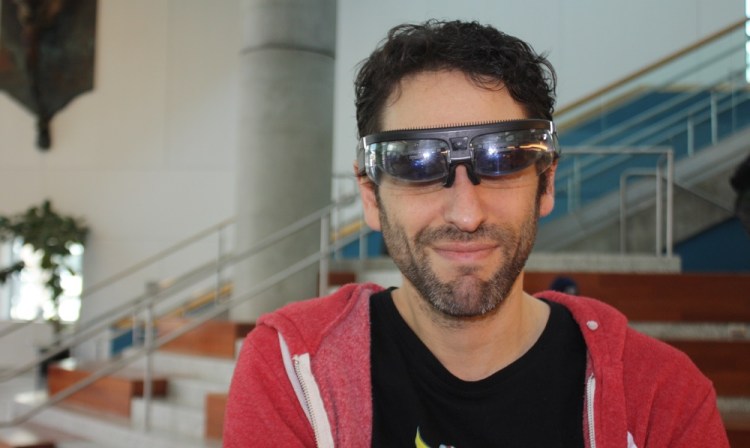Jules Urbach likes pretty pictures. The chief executive of cloud graphics startup Otoy likes them so much that he has dedicated his career to getting better and better 3D animated images in front of consumers. And right now, that means better virtual reality imagery.
Otoy’s Octane VR tool, available for free download for developers, can be used to create cool “light field rendering” images that are realistic and make you feel like you are part of a 3D scene. With VR, it can be used to create 18K bubble-like virtual environments that look clear. Otoy makes the software tools that enable developers to create cool imagery for a variety of platforms, including VR.
I caught up with Urbach at the Nvidia GPUTech conference in San Jose, Calif. He showed me some demos of light field virtual reality technology, including a demo of the 3D animated Bat Cave. He also showed some still images built with the Unreal Engine 4 tech from Epic Games. Those images look hyper-realistic, and you can move around inside them as if you were really there. Over time, Otoy expects the tech to be able to show you moving images too. Right now, the picture gets a little fuzzy when you move around. But that’s a problem that better processing power can solve.
Here’s an edited transcript of our conversation.
GamesBeat: Tell us what you’re showing here.
Jules Urbach: This is the image John Carmack [chief technology officer at Facebook’s Oculus VR division] was talking about in his keynote at the Game Developers Conference. It’s the first test we ever did in this format. This is what he was talking about when he said it’s the highest resolution he’s ever seen in a VR device. It gives you stereo in every direction you look. This comes right out of our Octane tool.
It’s such a big difference. Until we got to this point, I think everyone was thinking that VR might work just with game engines. No. If you render it right — I grant you that Carmack is a genius and he can just come up with ideas to make this work. But I think this is what is going to make the Samsung Gear VR (mobile virtual reality goggles) super successful. The quality is there. For a casual user, you can just look at these scenes and be in them for a while. It’s almost like looking at a living photograph or painting.
GamesBeat: Did you mention that Carmack worked on this or told your guys what to do?
Urbach: No. This is Oculus’s app. It was more like a collaborative project over a long time. He gave us a development kit early on. I said, “We’re doing all this crazy stuff to get light field rendering.” He said, “Maybe there’s something simpler. If you guys can render in this panoramic format, maybe we can do something really cool with Oculus 360 photos. It’s something we can do right away.” So we did it and sent it to him. He said, “Oh my God, this is the best thing we’ve ever seen. This is something compelling.” He tweeted about it and talked about it.
Right now imagery is done. Octane VR will just spit that out. Anyone can make these things.
GamesBeat: What do you call it? A 360 photo?
Urbach: Carmack calls it a stereo cube map, but it’s not exactly that. It’s basically just a miniaturized bubble that you—You don’t really move through the scene. The bubble effect just gives it a bit of depth, no matter where you look. It looks really good.
Carmack gave us the specification. He said, “Render it at this size, about an 18K image, and I guarantee your pixels will line up in the Gear VR.” He was right. He didn’t even see it before we did, but it turned out perfectly. We have this resolution in Octane now — “render this image for Gear VR” — and it spits out exactly the right format.
What’s cool is, since that’s happened, we’re seeing a lot of people get super excited about this kind of pipeline. The Keloid stuff I showed yesterday — my buddy in Barcelona has been working on this short. It’s an insane piece of work. It’s really realistic. But we’re taking shots from this and rendering a shot in VR right now. The guy who created all this — and I think this is going to be true of any computer-generated imagery artist — said, “I’ve been working on this thing for 18 months. I realize now that I’ve been filming in black and white when I should have been making color TV.” You see details you could never see in a movie.



